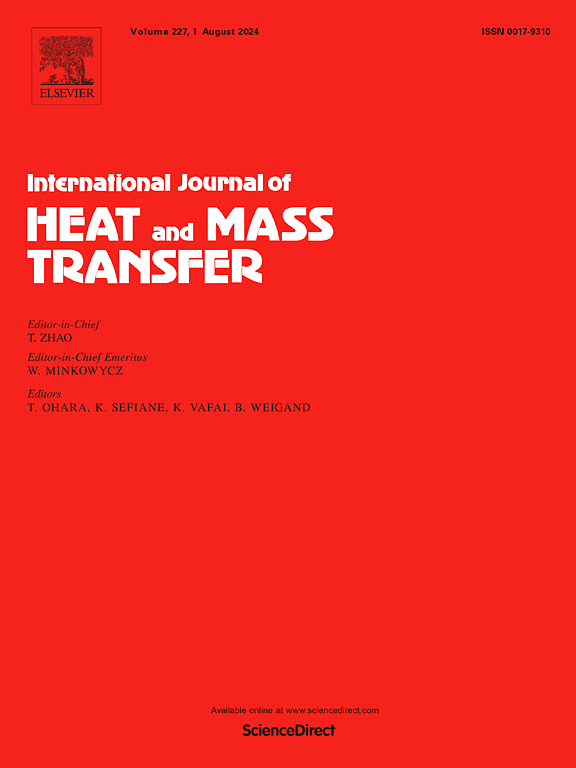Numerical investigation of heat transfer and pressure drop characteristics of flow boiling in manifold microchannels with a simple multiphase model
Abstract
The Manifold Microchannel (MMC) heat sink is an emerging micro-scale electronic cooling technology with high heat dissipation potential and application prospects. This paper numerically studied the subcooled flow boiling in MMC heat sinks. The feasibility of using the Mixture multiphase flow model to simulate the subcooled flow boiling in the MMC heat sink is validated. As the vapor-liquid interfaces are not reconstructed in this model, less computational resources are needed compared with other multiphase models. The results show that at constant channel width, the maximum and average temperatures of the MMC decrease with the increase of the microchannel aspect ratio. For cases with an inlet velocity of 0.35 m/s, the average wall temperature decreases from 388.53 K to 374.26 K when the aspect ratio increases from 6.67 to 16.67. The difference between the maximum and the minimum temperature on the heated surface increases with the increase of channel aspect ratio, resulting in an uneven temperature distribution. The thickness of temperature boundary layer near the divider is thicker than that near the heated base at low aspect ratio. Low pressure drops are obtained for cases with high aspect ratios due to the increase in cross-sectional area. The pressure drop of MMC with aspect ratio of 6.67 is nearly twice of the case with aspect ratio of 16.67. Although the Mixture model could not characterize the bubble shapes, the numerical results are similar to those obtained by the VOF model and the experimental visual results. A complex case of subcooled flow boiling in Z-type MMC with a hotspot heat flux of 800 W/cm2 is also conducted using the whole computational domain. Mal-distributions of mass flux, wall temperature and vapor void fraction are observed for this complicated problem. The difference between the maximum and the minimum temperatures is about 12 K. The Mixture model is more suitable to obtain reasonable numerical results of flow boiling in complex MMC with much less computational resource.

 求助内容:
求助内容: 应助结果提醒方式:
应助结果提醒方式:


